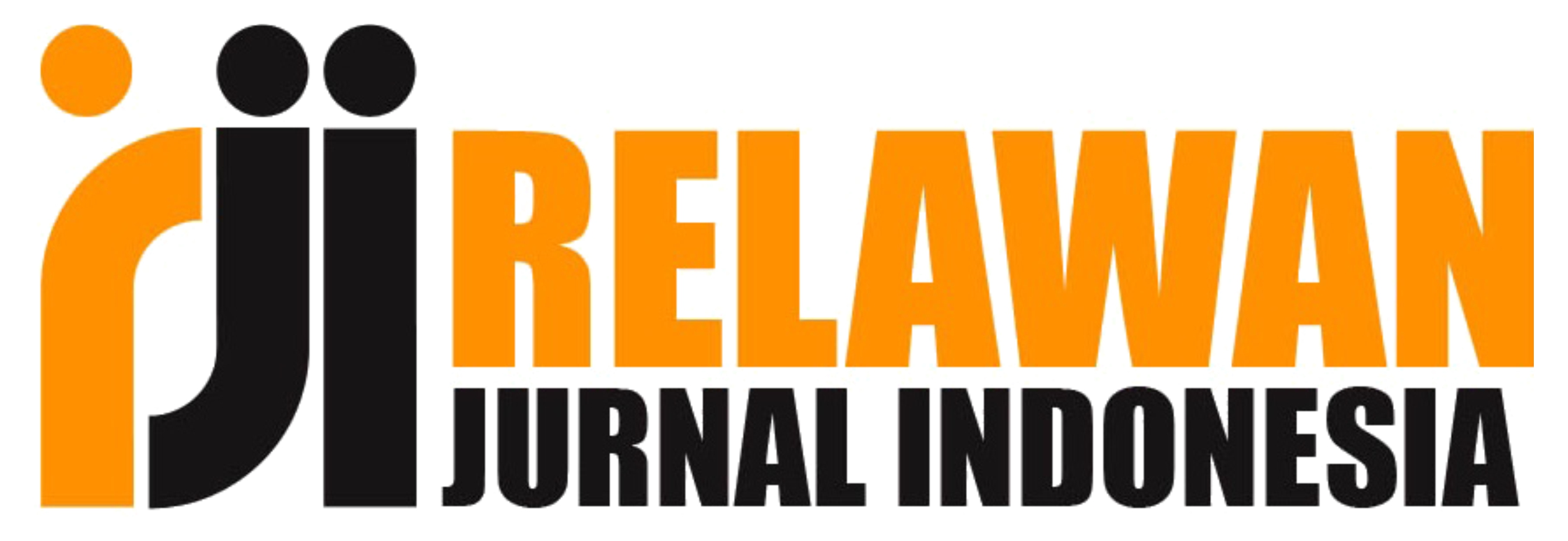Navigating the Digital Landscape Spatially: Assessing P2P Lending Influence on Banking Performance and Risk in Indonesia
Abstract
Research on the influence of digital finance on banking performance and risk is relevant, given the disparity development of the financial sector in Indonesia. The research method used a quantitative approach with data from the Financial Services Authority (OJK). Data processing employed Arellano Bond's two-step dynamic panel regression analysis (GMM), as the available data range was 2020-2022. The research conclusion asserts that banking performance has decreased due to the influence of Peer-to-Peer (P2P) lending. This research has also established that the influence of P2P presence on banking in Java did not differ from that observed outside of Java. The investigation of the influence of P2P lending on banking risk revealed no discernible effect. When researchers attempted to compare the disparities in the influence of P2P lending on risk, they discovered no differences between Java Island and outside Java Island. It implies that government policies encouraging financial institutions' development with digital platforms do not cause banking performance to decline. As such, stricter regulations on P2P lending are necessary to mitigate the risk of bad credit.
Keywords
Full Text:
PDFReferences
A. Basha, S., Elgammal, M. M., & Abuzayed, B. M. (2021). Online peer-to-peer lending: A review of the literature. Electronic Commerce Research and Applications, 48(April), 101069. https://doi.org/10.1016/j.elerap.2021.101069
Abbasi, K., Alam, A., Ahmed, N., & Ali, I. (2021). P2P lending Fintechs and SMEs ’ access to finance. Economics Letters, 204, 109890. https://doi.org/10.1016/j.econlet.2021.109890
Albaity, M., Saadaoui, R., & Hanifa, A. (2019). Competition and bank stability in the MENA region : The moderating e ff ect of Islamic versus conventional banks. Emerging Markets Review, 38(October 2018), 310–325. https://doi.org/10.1016/j.ememar.2019.01.003
Amanda, C. (2023). Rural banking spatial competition and stability. Economic Analysis and Policy, 78, 492–504. https://doi.org/10.1016/j.eap.2023.03.021
Beck, T., De Jonghe, O., & Schepens, G. (2013). Bank competition and stability: Cross-country heterogeneity. Journal of Financial Intermediation, 22(2), 218–244. https://doi.org/10.1016/j.jfi.2012.07.001
Berger, A. N., Klapper, L. F., & Turk-Ariss, R. (2009). Bank competition and financial stability. Journal of Financial Services Research, 35(2), 99–118. https://doi.org/10.1007/s10693-008-0050-7
Brandl, B., & Hornuf, L. (2020). Where Did FinTechs Come From, and Where Do They Go? The Transformation of the Financial Industry in Germany After Digitalization. Frontiers in Artificial Intelligence, 3(March), 1–12. https://doi.org/10.3389/frai.2020.00008
Chen, W., Wu, W., & Zhang, T. (2023). Fintech Development, Firm digitalization, and Bank Loan Pricing. Journal of Behavioral and Experimental Finance, 39, 100838. https://doi.org/10.1016/j.jbef.2023.100838
Cheng, M., & Qu, Y. (2020). Does bank FinTech reduce credit risk? Evidence from China. Pacific Basin Finance Journal, 63, 101398. https://doi.org/10.1016/j.pacfin.2020.101398
Cuadros-solas, P. J., Cubillas, E., Salvador, C., & Val, U. De. (2023). International Review of Financial Analysis Does alternative digital lending affect bank performance ? Cross-country and bank-level evidence. International Review of Financial Analysis, 90(March), 102873. https://doi.org/10.1016/j.irfa.2023.102873
Daragmeh, A., Lentner, C., & Sági, J. (2021). FinTech payments in the era of COVID-19: Factors influencing behavioral intentions of “Generation X†in Hungary to use mobile payment. Journal of Behavioral and Experimental Finance, 100574. https://doi.org/10.1016/j.jbef.2021.100574
Daud, S. N. M., & Ahmad, A. H. (2023). Financial inclusion, economic growth and the role of digital technology. Finance Research Letters, 53(December 2022), 103602. https://doi.org/10.1016/j.frl.2022.103602
Degl, M., Fiordelisi, F., & Trinugroho, I. (2020). Competition and stability in the credit industry : Banking vs . factoring industries. The British Accounting Review, 52(1), 100831. https://doi.org/10.1016/j.bar.2019.03.006
Gao, J., & Reed, R. R. (2021). Sunspot bank runs and fragility : The role of financial sector. European Economic Review, 139(August), 103877. https://doi.org/10.1016/j.euroecorev.2021.103877
Grennan, J. (2020). FinTechs and the Market for Financial Analysis.
He, C., Li, C., Geng, X., & Wen, Z. (2022). Research on the influence of digital finance on local economic development. Procedia Computer Science, 202, 385–389. https://doi.org/10.1016/j.procs.2022.04.053
Hodula, M. (2021). Does Fintech credit substitute for traditional credit? Evidence from 78 countries. Finance Research Letters, July, 102469. https://doi.org/10.1016/j.frl.2021.102469
Hornuf, L., Klus, M. F., Lohwasser, T. S., & Schwienbacher, A. (2020). How do banks interact with fintech startups? Small Business Economics, January. https://doi.org/10.1007/s11187-020-00359-3
Jiang, J., Liao, L., Wang, Z., & Zhang, X. (2021). Government Affiliation and Peer-To-Peer Lending Platforms in China. Journal of Empirical Finance, 62(March), 87–106. https://doi.org/10.1016/j.jempfin.2021.02.004
Junarsin, E., Yusviento, R., Kristanto, J., Marcelin, I., & Bastanta, J. (2023). Heliyon Does fintech lending expansion disturb financial system stability ? Evidence from Indonesia. Heliyon, 9(9), e18384. https://doi.org/10.1016/j.heliyon.2023.e18384
Kabir, M. N., & Worthington, A. C. (2017). The ‘competition–stability/fragility’ nexus: A comparative analysis of Islamic and conventional banks. International Review of Financial Analysis, 50, 111–128. https://doi.org/10.1016/j.irfa.2017.02.006
Li, J., Li, J., Zhu, X., Yao, Y., & Casu, B. (2020). Risk Spillovers Between Fintech and Traditional Financial Institutions: Evidence from teh US. International Review of Financial Analysis, 101544. https://doi.org/10.1016/j.irfa.2020.101544
Li, L., Gao, W., & Gu, W. (2023). Fintech , bank concentration and commercial bank profitability : Evidence from Chinese urban commercial banks. Finance Research Letters, 57(July), 104234. https://doi.org/10.1016/j.frl.2023.104234
Li, Q., & Zhang, X. (2024). Digital finance development in China: A scientometric review. Heliyon, 10(16), e36107. https://doi.org/10.1016/j.heliyon.2024.e36107
Li, Y., Spigt, R., & Swinkels, L. (2017). The impact of FinTech start-ups on incumbent retail banks’ share prices. Financial Innovation, 3(1). https://doi.org/10.1186/s40854-017-0076-7
Liu, H., Qiao, H., Wang, S., & Li, Y. (2019). Platform Competition in Peer-to-Peer Lending Considering Risk Control Ability. European Journal of Operational Research, 274(1), 280–290. https://doi.org/10.1016/j.ejor.2018.09.024
Liu, Z., Shang, J., Wu, S., & Chen, P. (2019). Social collateral , soft information and online peer-to-peer lending : A theoretical model. European Journal of Operational Research, xxxx. https://doi.org/10.1016/j.ejor.2019.08.038
Lu, H., Wang, B., Wang, H., & Zhao, T. (2020). Does social capital matter for peer-to-peer-lending? Empirical evidence. Pacific Basin Finance Journal, 61(February), 101338. https://doi.org/10.1016/j.pacfin.2020.101338
Ma, L., & Ouyang, M. (2023). Spatiotemporal heterogeneity of the impact of digital inclusive finance on tourism economic development: Evidence from China. Journal of Hospitality and Tourism Management, 56(March), 519–531. https://doi.org/10.1016/j.jhtm.2023.08.015
Ma, Q., Xu, L., Anwar, S., & Lu, Z. (2023). Banking competition and the use of shadow credit : Evidence from lending marketplaces. Global Finance Journal, 58(December 2022), 100884. https://doi.org/10.1016/j.gfj.2023.100884
Maskara, P. K., Kuvvet, E., & Chen, G. (2021). The role of P2P platforms in enhancing financial inclusion in the United States : An analysis of peer-to-peer lending across the rural – urban divide. https://doi.org/10.1111/fima.12341
Murinde, V., Rizopoulos, E., & Zachariadis, M. (2022). The impact of the FinTech revolution on the future of banking: Opportunities and risks. International Review of Financial Analysis, 81(December 2021), 102103. https://doi.org/10.1016/j.irfa.2022.102103
Onorato, G., Pampurini, F., & Grazia, A. (2024). Research in International Business and Finance Lending activity efficiency . A comparison between fintech firms and the banking sector. Research in International Business and Finance, 68(June 2023), 102185. https://doi.org/10.1016/j.ribaf.2023.102185
Phan, D. H. B., Narayan, P. K., Rahman, R. E., & Hutabarat, A. R. (2020). Do financial technology firms influence bank performance? Pacific Basin Finance Journal, 62, 101210. https://doi.org/10.1016/j.pacfin.2019.101210
Risfandy, T., Tarazi, A., & Trinugroho, I. (2022). Competition in dual markets : Implications for banking system stability. Global Finance Journal, 52(August 2020), 100579. https://doi.org/10.1016/j.gfj.2020.100579
Roure, C. De. (2022). P2P Lenders versus Banks : Cream Skimming or Bottom Fishing ? 11(December 2021), 213–262.
Shen, Y., Ren, M., & Zhao, J. (2023). Bank competition and zombie company : Empirical evidence. Economic Analysis and Policy, 80(18), 297–318. https://doi.org/10.1016/j.eap.2023.08.011
Sun, Y., & Tang, X. (2022). The impact of digital inclusive finance on sustainable economic growth in China. Finance Research Letters, 50(86), 103234. https://doi.org/10.1016/j.frl.2022.103234
Tang, H. (2019). Peer-to-Peer Lenders Versus Banks: Substitutes or Complements? Review of Financial Studies, 32(5), 1900–1938. https://doi.org/10.1093/rfs/hhy137
Thakor, A. V. (2020a). Fintech and banking: What do we know? Journal of Financial Intermediation, 41(July). https://doi.org/10.1016/j.jfi.2019.100833
Thakor, A. V. (2020b). Fintech and banking: What do we know? Journal of Financial Intermediation, 41(August 2019). https://doi.org/10.1016/j.jfi.2019.100833
Wang, Chao, Wang, J., Wu, C., & Zhang, Y. (2023). Voluntary disclosure in P2P lending : Information or hyperbole ? ☆. Pacific-Basin Finance Journal, 79(November 2022), 102024. https://doi.org/10.1016/j.pacfin.2023.102024
Wang, Chengfu, Chen, X., Jin, W., & Fan, X. (2022). Credit guarantee types for financing retailers through online peer-to-peer lending: Equilibrium and coordinating strategy. European Journal of Operational Research, 297(1), 380–392. https://doi.org/10.1016/j.ejor.2021.05.054
Wu, F., Cui, F., & Liu, T. (2023). The influence of digital inclusive finance on household wealth: A study based on CHFS data. Finance Research Letters, 58(July). https://doi.org/10.1016/j.frl.2023.104460
Xia, L., Baghaie, S., & Mohammad Sajadi, S. (2023). The digital economy: Challenges and opportunities in the new era of technology and electronic communications. Ain Shams Engineering Journal, 15(2), 102411. https://doi.org/10.1016/j.asej.2023.102411
Younas, Z. I., Qureshi, A., & Al-Faryan, M. A. S. (2022). Financial inclusion, the shadow economy and economic growth in developing economies. Structural Change and Economic Dynamics, 62, 613–621. https://doi.org/10.1016/j.strueco.2022.03.011
Yudaruddin, R., Soedarmono, W., Adi, B., Fitrian, Z., Mardiany, M., Hendro, A., & Nor, E. (2023). Heliyon Financial technology and bank stability in an emerging market economy. Heliyon, 9(5), e16183. https://doi.org/10.1016/j.heliyon.2023.e16183
DOI: http://dx.doi.org/10.56444/mem.v40i1.5345
Refbacks
- There are currently no refbacks.
Copyright (c) 2025 Media Ekonomi dan Manajemen

This work is licensed under a Creative Commons Attribution 4.0 International License.
Â

This work is licensed under a Creative Commons Attribution 4.0 International License.






